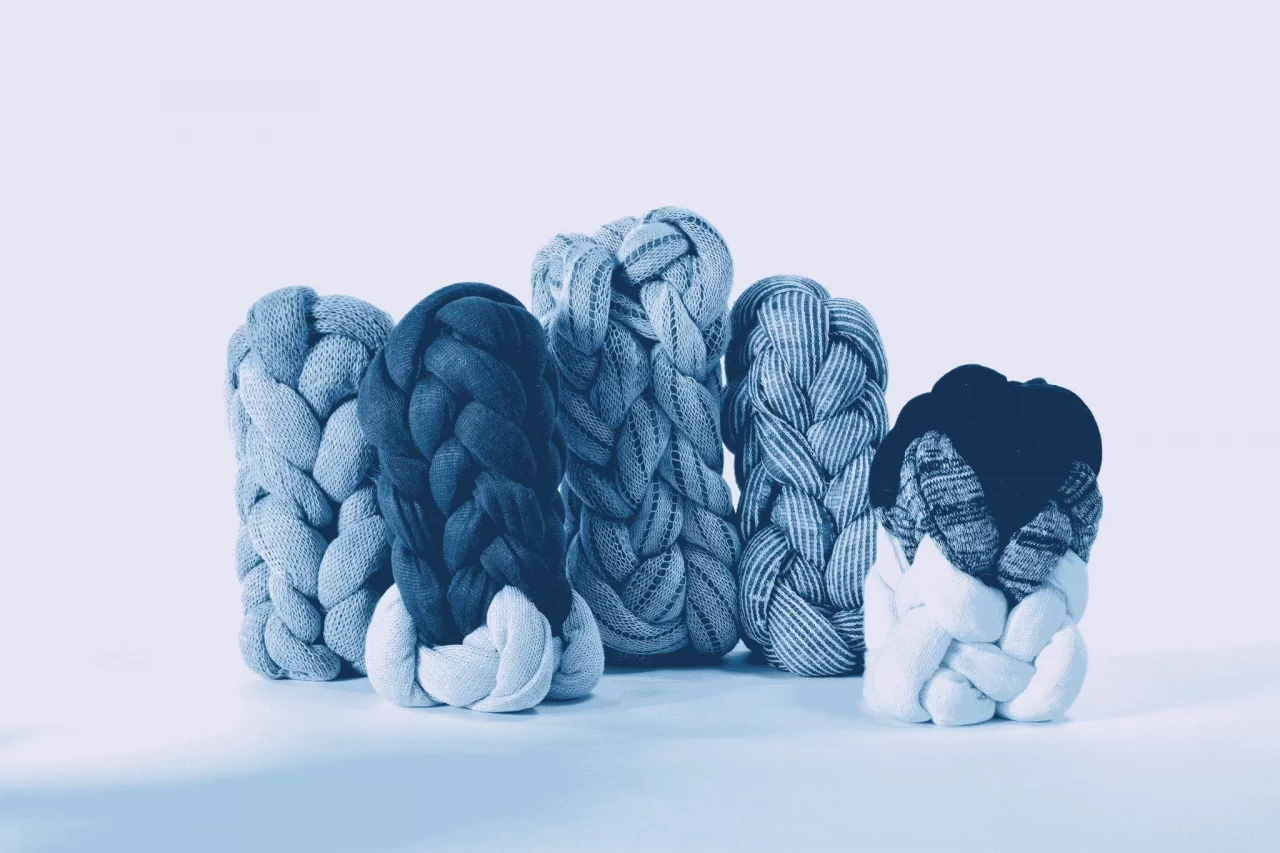Exhibition
RESPIRE
POUR UN DESIGN CLIMATIQUE
MASSENOIRE – ESCH/BELVAL
04.06 – 25.09.2022
An exhibition organized by the École nationale supérieure d’art et de design de Nancy I Ensad Nancy, and the French Ministry of Culture as part of Esch2022, European Capital of Culture, with the support of Région Grand Est and Métropole du Grand Nancy, in partnership with Comité de développement et de promotion de la vannerie I CDPV, Alliance Artem, the École supérieure d’art et design de Reims Esad de Reims (Idis research chair), and the Haute École des arts du Rhin I Hear.
Respire, pour un design climatique, is a project labelled as part of the “French Presidency of the Council of the European Union”.
Exhibition plan
- 0.THE GARDEN
- 2.1A DIVERSE SET OF RECORDS
- 1.1ASSESSMENT AND INDIVIDUAL DAILY EFFORTS
- 2.2FROM A SENSORY PERCEPTION TO MEASURING TOOLS
- 1.2SENSORY IMAGES FOR NEW BEHAVIOURS
- 2.3AIR QUALITY AND CULTURE
- 1.315M3 OF AIR
- 3.1BASKETRY AND VIRTUAL MOULD COLLECTION
- 1.4CURVES
- 3.2HEMP, A BIO-SOURCED MATERIAL AT WORK
The garden
Designers Chloé Guillemart and Emma Gitzinger, both graduates of Ensad Nancy, welcome us before entering the exhibition Respire, pour un design climatique. In this space called “the Garden”, their works show the natural and cosmic dimension of breathing.
Their work combines the act of breathing with flow circulation in nature and explores the conditions of a symbiotic relationship between all living things. Demonstrating new ecological ways of being, of inhabiting the world and of representing it, they remind us of the importance of breathing as the primary condition of our existence.
PLANTULE
EMMA GITZINGER’S GRADUATION PROJECT 2021
graduate of the Ensad Nancy (2017) and the Ensci I École nationale supérieure de création industrielle (2021)
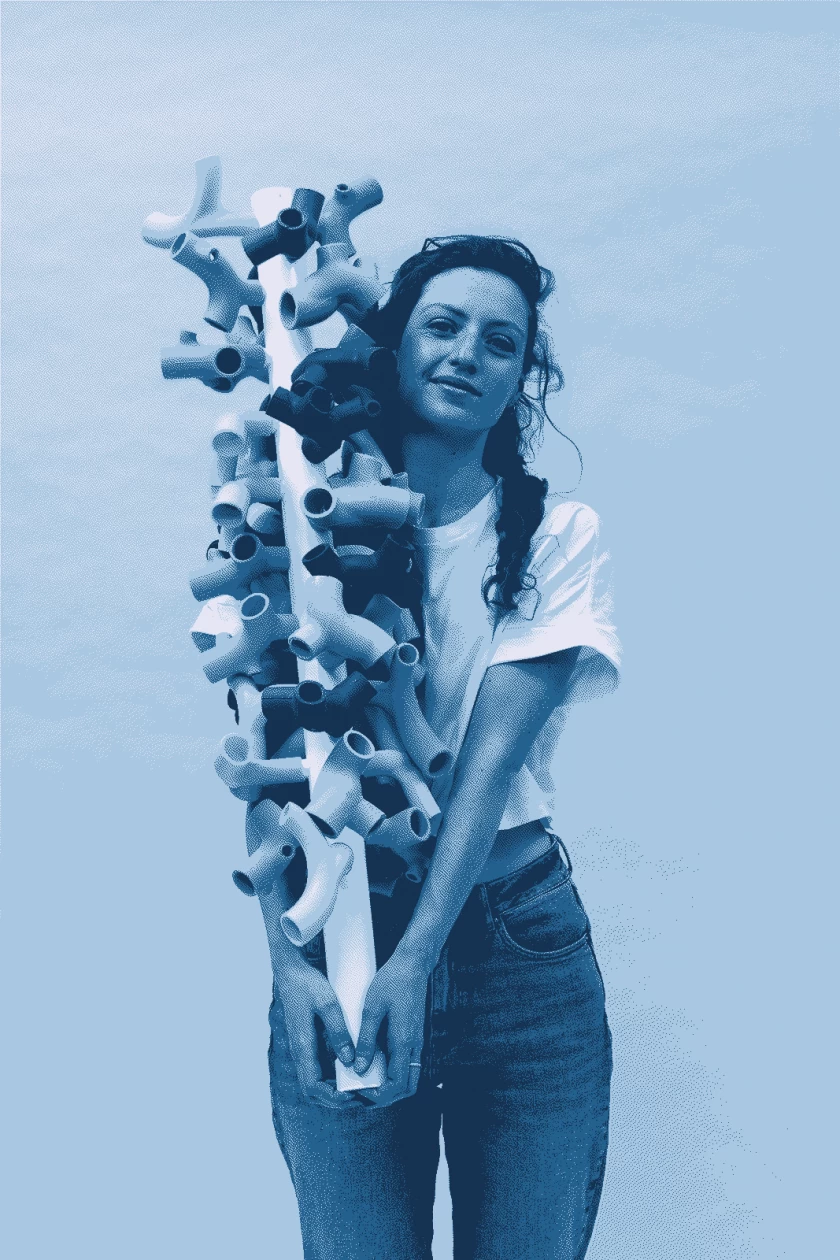
The world of living organisms is richly complex, and everything is in constant interaction. The world that humans have built for themselves is most often binary and geometric.
By creating Plantule, a playful sensory learning tool for children from the ages of 5 to 10, Emma Gitzinger wants to give children the means to understand their environment, so they will feel capable of building the world of tomorrow while respecting the environment and more particularly air quality.
Plantule is a construction game inspired by the invisible structures of living organisms. It encourages collaboration and communication by deviating from the classic models of construction games that are often geometric and orthogonal. It offers the possibility to question our understanding of the laws of nature.
Plantule is an open game because it has no rules. It is inclusive because it embraces the environment in which it is played. Children can plan and generate different structures each day and eventually imagine other games within the game. The possibilities are endless. The game is therefore open to transformation, appropriation, and hybridization. For children, the game is immersive and encourages them to use their bodies and inhabit the environment they have built. It broadens their sensory and cognitive experience by reintroducing a sense of chance and uncertainty.
It plants seeds that will allow them, as adults, to understand life’s complexity.
It consists of flexible joints and sections of locally harvested wood. Depending on the material used, the game evolves. Bamboo, which is naturally hollow, allows the passage of elements. Solid wood will have a reticular form close to natural networks.
Plantule is also a device that can work in association with other playful, artistic and scientific devices.
EFFLUVES
CHLOÉ GUILLEMART’S PROJECT
designer, graduate of the Ensad Nancy (2017)
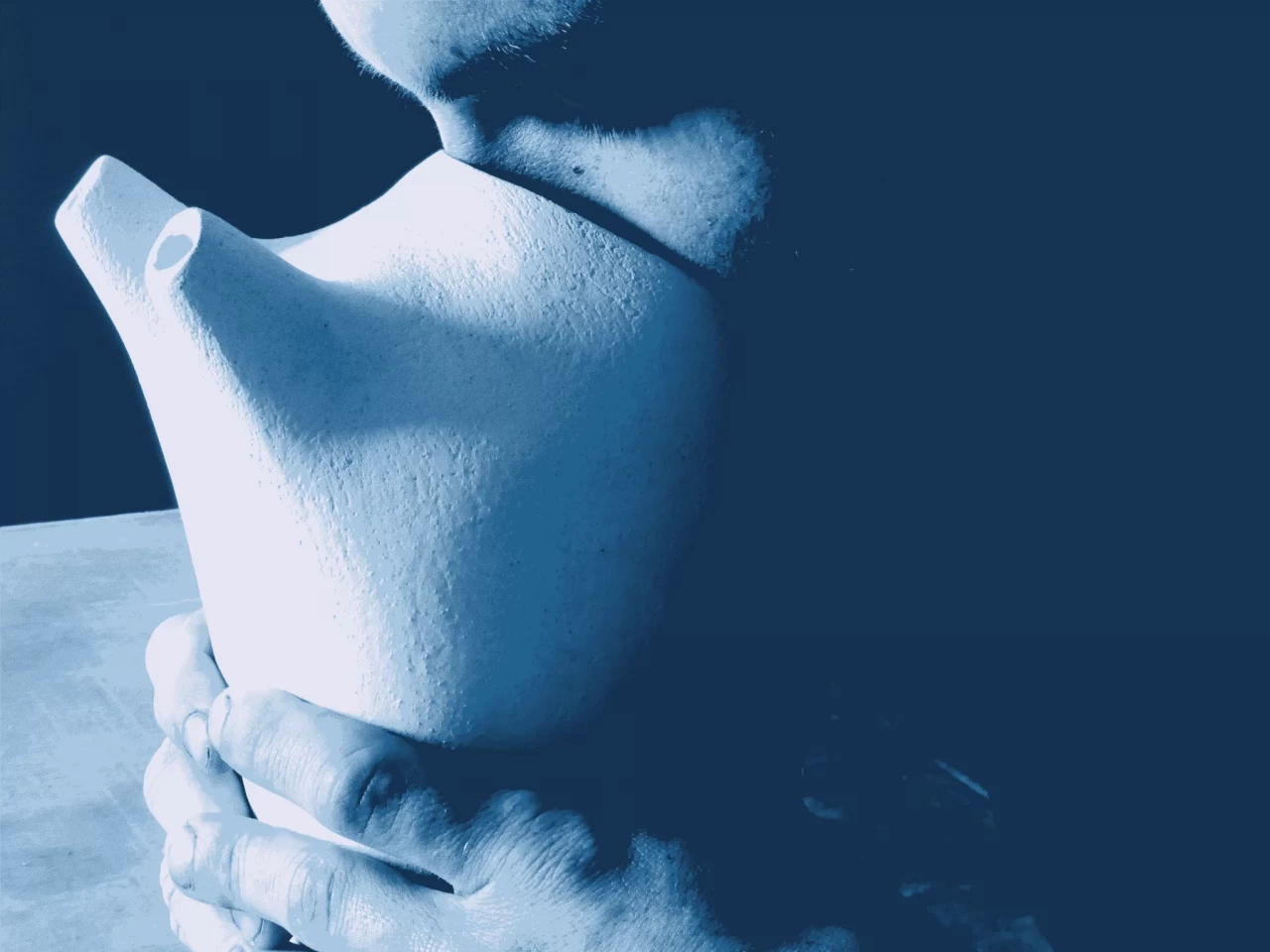
Effluves is a service that brings experts together and creates a local network of skills related to aromatherapy. It is also a collection of ceramic objects created with its users. Effluves reflects on the singular place of flora in the respiratory act and defends the intrinsic virtues of medicinal plants and their collection.
With the support of Institut de l’engagement and the Deloitte corporate foundation.
What do webreath every day?
ASSESSMENT AND
INDIVIDUAL DAILY EFFORTS
“People don’t spend all day in front of an analyser. They take public transport, drive their car, they sometimes travel outside cities and breathe a completely different air from the one in cities, and they spend 80% of their time at home. We do not assess the exposure of individuals and the levers on which they could act individually.”
As part of a research programme on environments proposed by the DMLab, Ensad Nancy students followed several individuals in their daily lives and measured the quality of the air they breathe.
Thanks to “micro-sensors” that record data, such individual measurement allowed us to “visualize” the quality of the air breathed by each individual. The objective is not knowing the quality of the environment in a specific place, but characterizing the 15m³ of air which a person breathes every day in their living spaces during their daily activities.
From these observations, we understand the stakes of individual daily efforts against air pollution.

SENSORY IMAGES
FOR NEW BEHAVIOURS
“For example, the whole campaign around CO2 was quite disappointing. The dangers showed by the campaign did not seem relevant to those who are most affected by them; they do not connect these dangers with their situation.”
How can we encourage the fight against pollution and the development of an “air quality culture” through a sensory and subjective approach?
It is striking to note that, despite the widely distributed information on poor air quality during pollution peaks, citizens do not change their behaviour. Distributing quantitative and objective data is not enough.
It is essential to find elements that allow a subtle reading and a subjective appropriation of the topic at hand.
What makes sense for each person? How can visual communication encourage everyone to pursue their daily fight against pollution? The images projected here were made by the students with the people they followed during the air quality survey initiated by the DMLab. They show their living environments, what affects them, and more broadly the signs of an exchange of subjectivities.

15 M³ OF AIR
Each person breathes an average of 15m³ of air every day. This volume may vary depending on physical activity, age, etc. Indeed, it can reach 18 to 20m³ of air for a high-level athlete.
The air we breathe can be polluted. To reduce the health risks of pollution, we must identify three factors:
- the concentration of pollutants in the air;
- the time spent by a person in a polluted environment;
- the amount of air a person breathes from this polluted environment;
and try to act on them by changing our lifestyles, our behaviours, etc.
CURVES
“Exposure to pollution can also be an aggravating factor for an already existing disease, which will manifest itself in an acute way. Chronic effects are characterized by the development of a disease that would never have appeared without lifelong exposure to the effects of pollution.”
How can we analyse and explain the pollution we face every day?
The presented curves show the variations of the sensor data on a temporal axis, allowing to examine the pollution we face every day; they represent the events, facts, and gestures of each of the subjects observed by the students of Ensad Nancy during their field survey. Their visualization leads to a certain realisation.
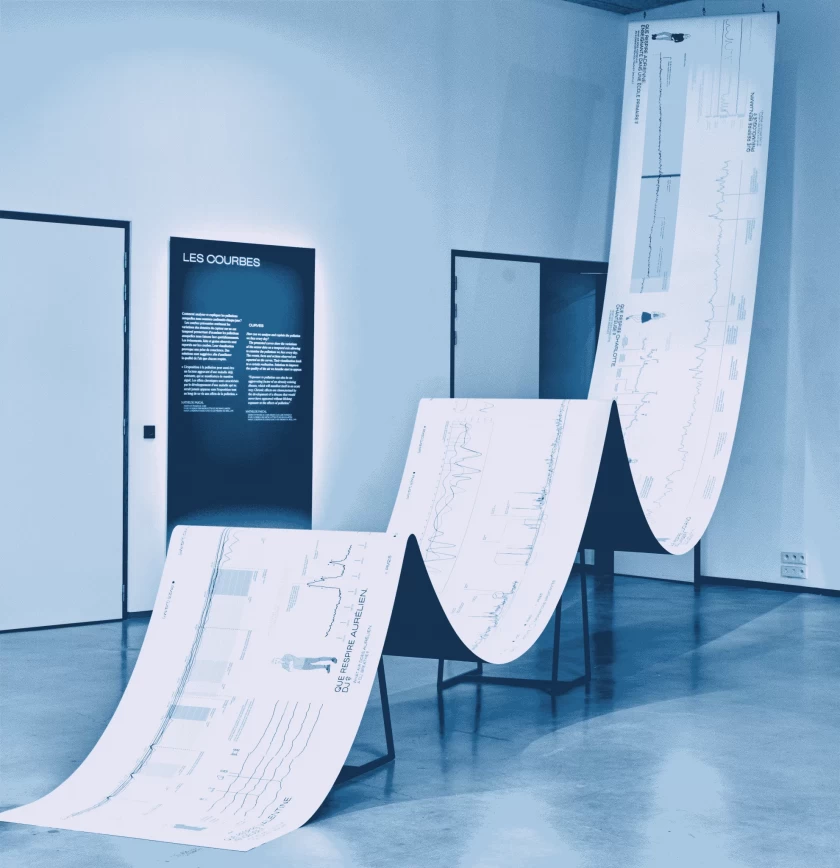
How is air qualitymeasured?
A DIVERSE SET OF RECORDS
For many years now, citizens have contributed to air quality measurement using micro-sensors to pool data and produce collective representations in the form of urban pollution maps. They are called “smart citizens” or “citizen-sensors”.
These citizen networks follow 5 main objectives:
- evaluating the air quality where everyone lives and breathes as accurately as possible;
- complementing official measurements and giving citizens the opportunity to produce data for themselves and for the community;
- defining a new citizenship in the age of the Internet of Things, or “data democracy”;
- producing an empowering factuality pact through measurement;
- identifying and defending air as a “common good”.
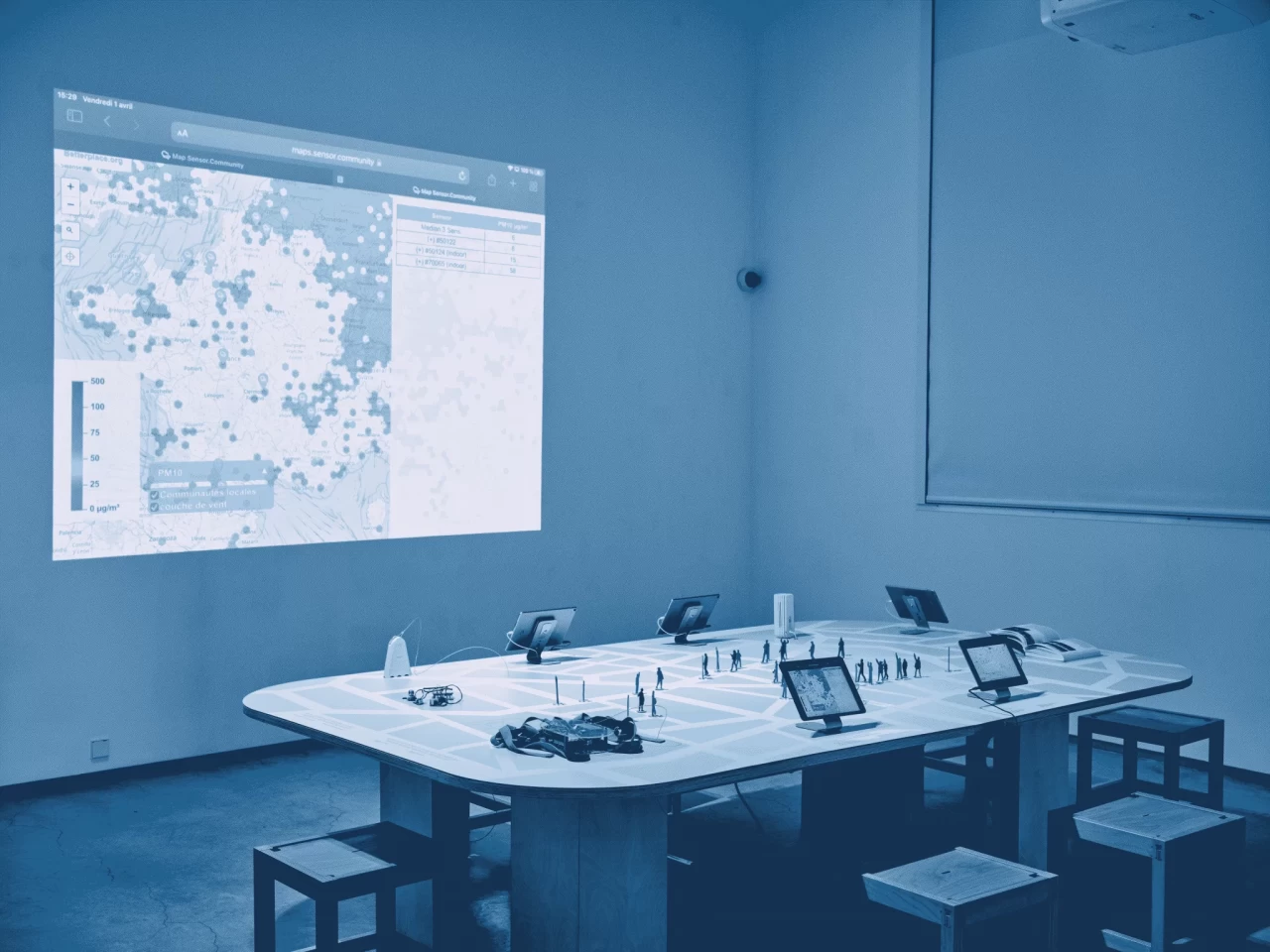
FROM A SENSORY PERCEPTION
TO MEASURING TOOLS
“Before laboratories were able to deliver technical data, the matter of air pollution was a sensory, visual, olfactory question. For example, one might think of soot deposited on the sheets of housewives. These are rough, personal, and not technical data.”
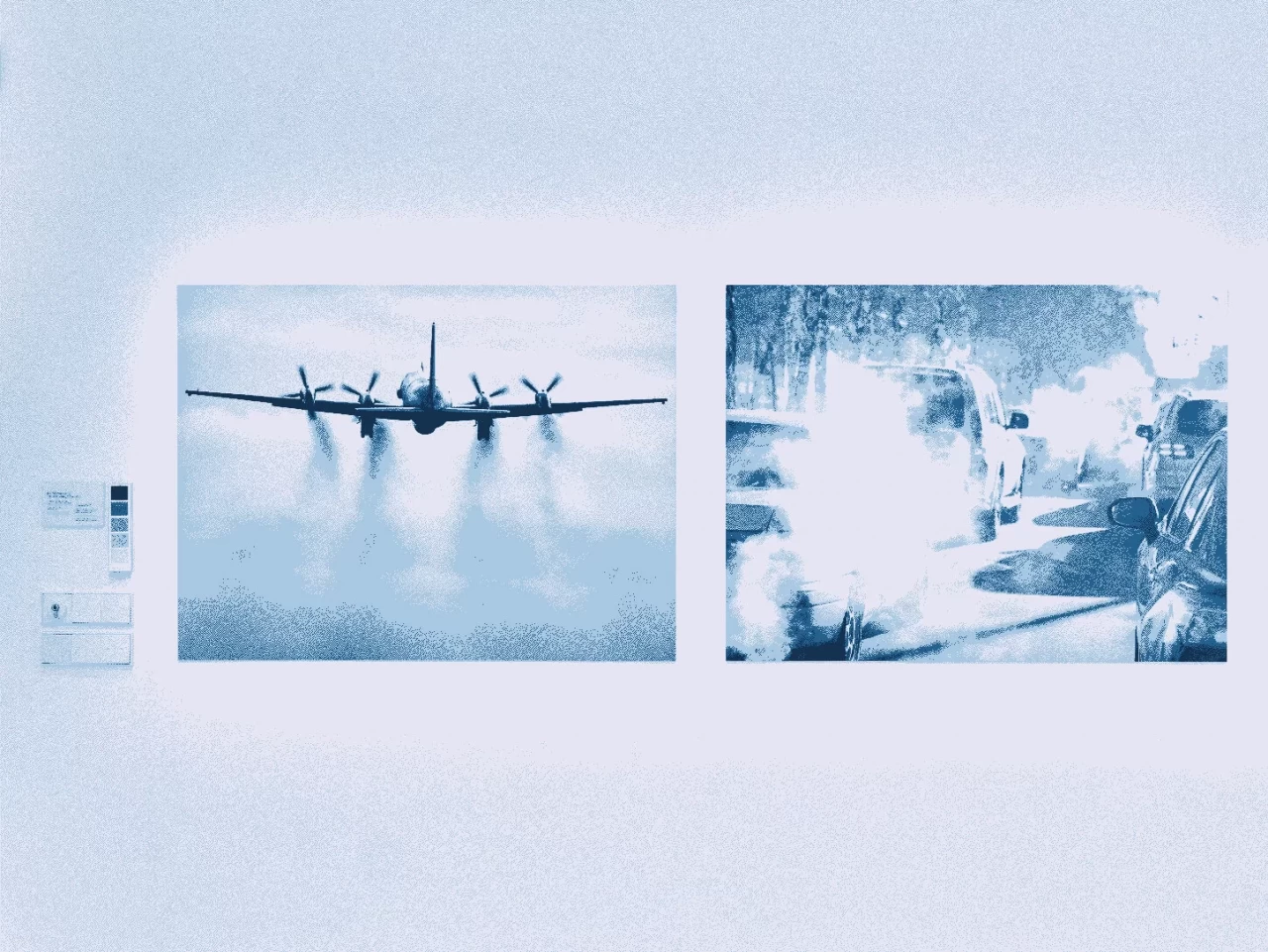
How has air quality analysis changed over the centuries? How did we move from a sensitive relationship to a technical and normative analysis of the air we breathe?
Traces of sensory perceptions can be found in novels, paintings, and in the grey scale of Maximilien Ringelmann (1861–1931), a “benchmark chart” for visually determining the apparent density or opacity of smoke. During the 20th century, perception slowly gave way to an instrumental approach developed by engineers. Today, the democratization of technical knowledge allows the design of connected individual microsensors: we are therefore at the dawn of a new transition where our relationship to technological objects and our sensitive relationship to the environment can merge in order to form a techno-sensitive experience of air.
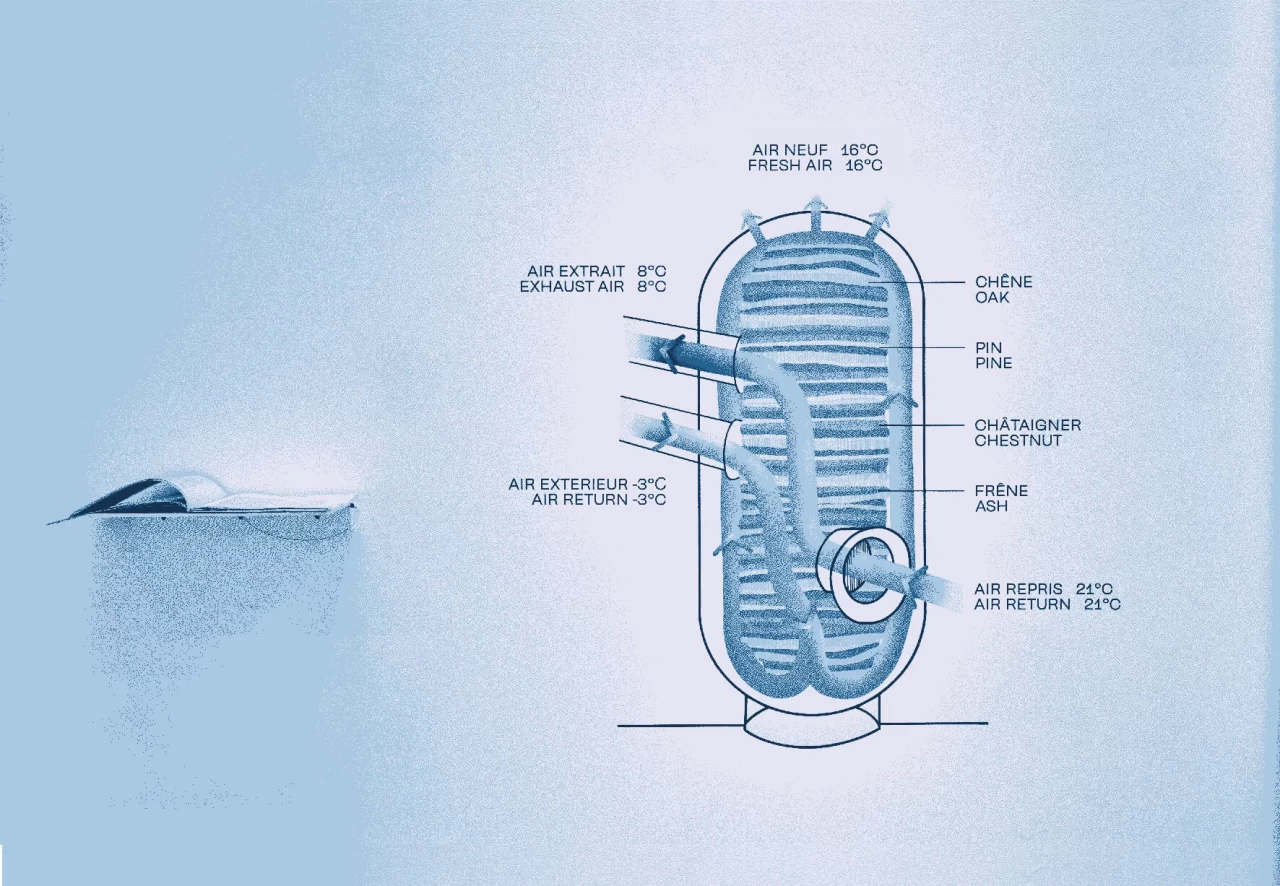
AIR QUALITY AND CULTURE
“We should change our focus and consider air pollution as a social issue. We would then change our terminology. It would no longer be a measurement from a standard: we would switch from metric to odour, from decibels to noise, from health risk to quality of life.”
What is air quality? What would it take to build an air quality culture?
The atmospheric design movement contributes to developing a culture of air quality, as sensation and natural conditions constitute the core of its projects. We find the principles of this in Philippe Rahm’s Terroirs déterritorialisés, in which he reconstructs the air quality of 15 May 1832, in Paris, before France’s first coal factory was built.
How can our productionsaffect air quality?
BASKETRY AND VIRTUAL
MOULD COLLECTION
Through innovation, research in design contributes to the use of bio-based materials that preserve air quality. Wicker production and basketry are an example of agricultural production and ecological manufacturing methods enhanced by a digital approach to creation.
For the past three years, Ensad Nancy has partnered with CDPV (Committee for the development and promotion of basketry) in Fayl-Billot, to create cooperation between designers, designersin- training, and basket makers, based on the traditional activity of basketry using moulds.
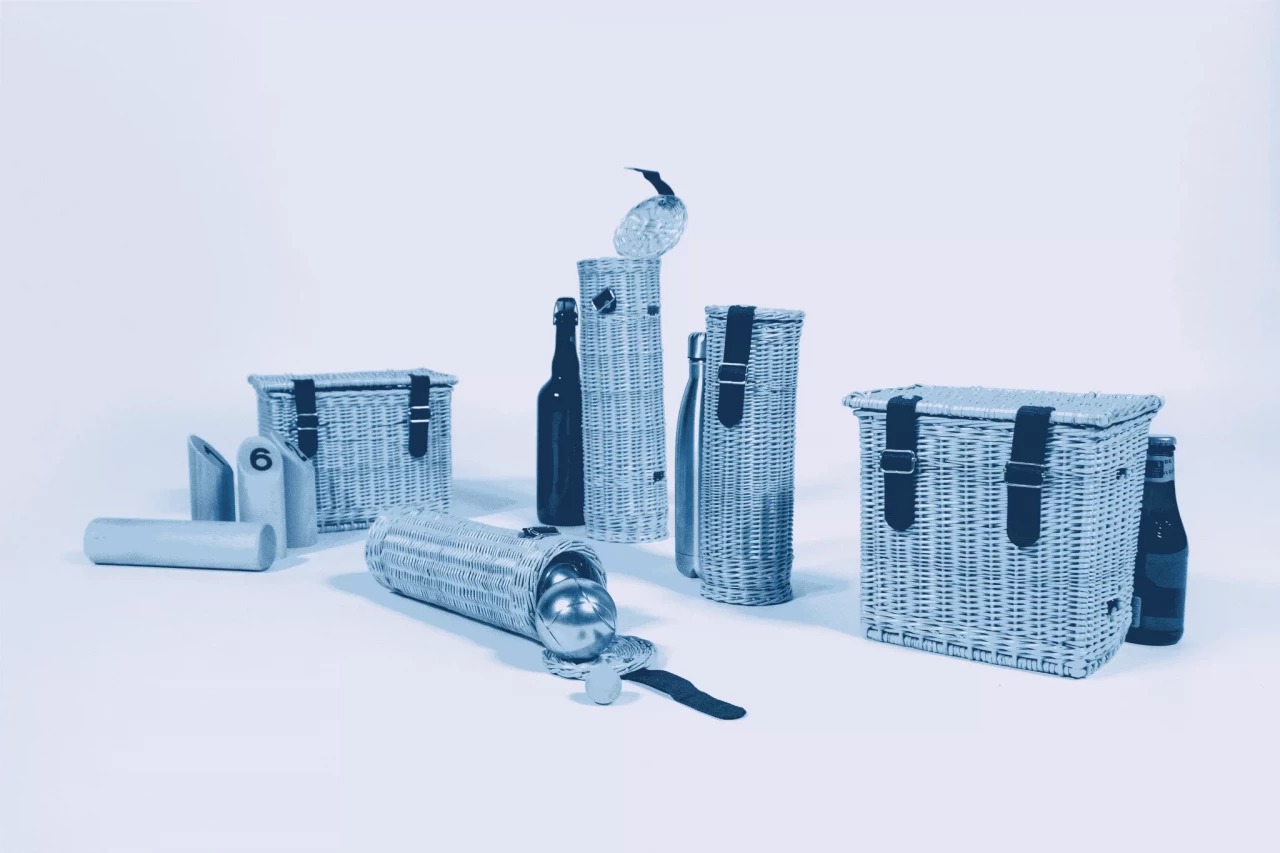
This partnership has led to the launch of two initiatives:
- the virtual mould collection, an online platform where different wooden moulds traditionally used by basket makers are presented and digitized by the students of Ensad Nancy. The moulds on the platform are now available for digital printing. They can be used to support new productions. This initiative addresses various needs: preserving, documenting and promoting heritage, but also encouraging the distribution and usage of these traditional objects;
- Showcasing the results, the students designed objects requiring the creation of new moulds, with innovative shapes, that were eventually used by the CDPV basket makers. These projects, which combine design and craft skills, show the creative interest of the virtual mould collection.
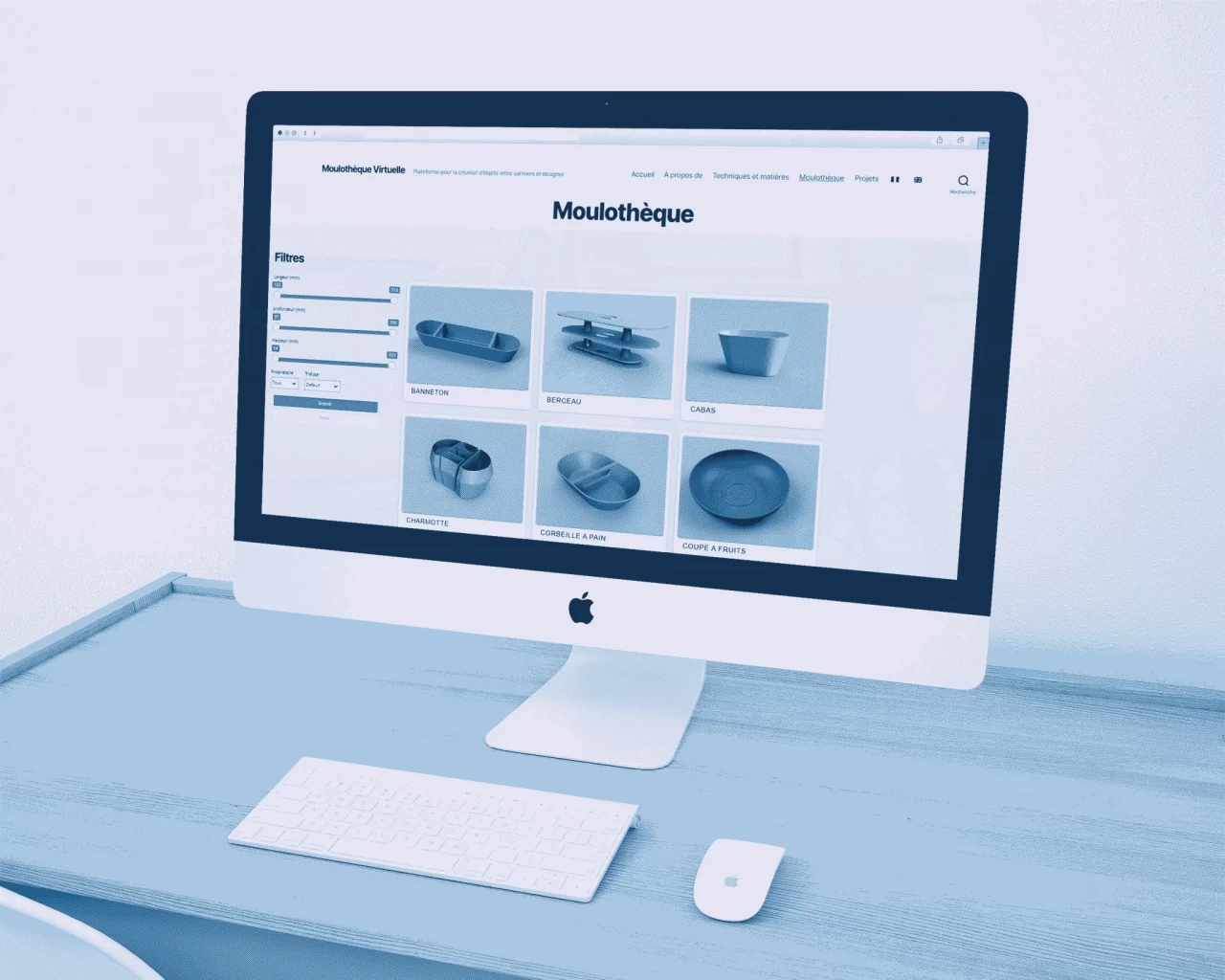
HEMP, A BIO-SOURCED
MATERIAL AT WORK
40% of European hemp production is grown in the Grand Est region. It benefits from a complete chain of production, from the producerprocessor, to research centres, construction professionals and promotional organisations.

Hemp has a multitude of properties. Its culture supports sustainable, GMO-free agriculture. Hemp is planted between two crops to regenerate and improve soil structure. It is an annual crop (from April to September). It respects the environment and more specifically air quality. It does not require irrigation or phytosanitary products. The plant’s need for nitrogen is very low. For example, 1ha of hemp is equivalent to 1ha of primary forest. Last but not least, hemp cultivation is a reservoir for biodiversity that contributes to the preservation of many species (insects and small animals).
Growing interest in bio-sourced materials and the issue of energy transition have led students and the Idis research chair team to imagine new applications for hemp. The Idis research chair has joined forces with the Haute École des arts du Rhin (Hear) in Mulhouse, located in the industrial textile basin. Together, the two schools organized cross workshops around this material with partner companies willing to revive the lost know-how of hemp textile production. They offer a prospective vision of hemp, from fashion to the environment, from an XS to an XXL scale, from sample to prototype.
Partners: Interchanvre, FRD, La Chanvrière, CELC and businesses, Emanuel Lang, Corderie Meyer-Sansboeuf
